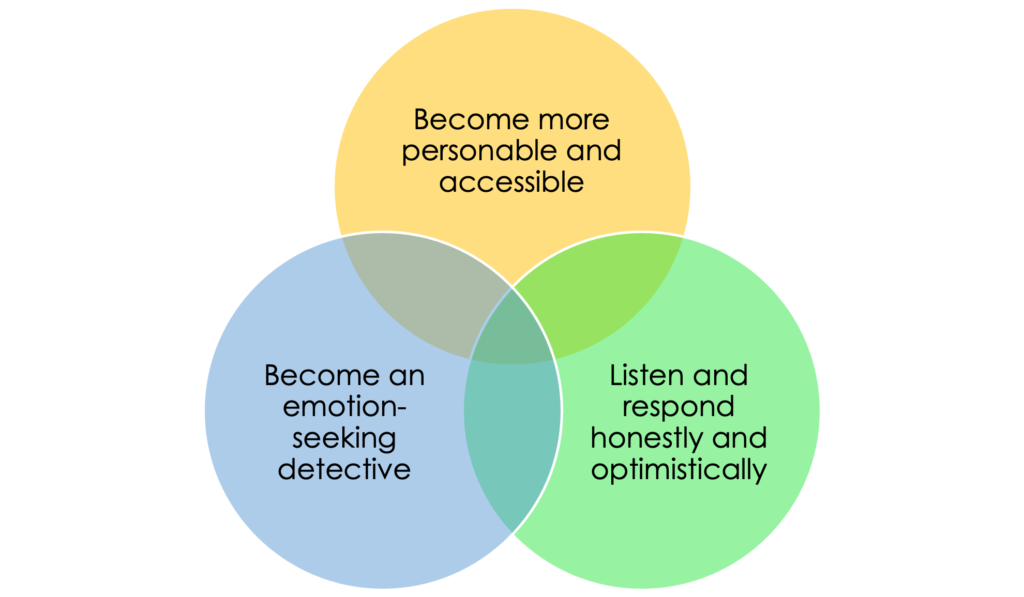By Carli Uys
Head of Marketing, Research and Development (MCom Industrial Psychology and MCom Communication studies)
Some leaders are naturally more empathetic than others and will have an advantage over leaders who have difficulty expressing empathy. Most leaders fall in the middle and are seen to be sometimes or somewhat empathetic.
Here are a few strategies to practice becoming more empathetic:

- Become more personable and accessible
It is important for the leaders to first understand and get in touch with their own feelings and how to express them, before they can attune themselves to the feelings of team members. Leaders should take time to recognise and learn how to express their own emotions to be able to recognise the fears and emotions of their team members.
- Listen and respond honestly and optimistically
Leaders should always listen without judgement; this will allow team members to be vulnerable during difficult times. When a leader leads with empathy it often involves saying nothing at all and sometimes agreeing that you are sad, confused or angry, as well. Leaders have to make sure that they and their team members do not wallow to long in negative emotions, and instead focus on honest discussions and then pivot the conversations toward positive solutions.
- Become an emotion-seeking detective
Leaders should ask their team members “What keeps you up at night?”. This will help team members to realise the leader’s true interest in their lives and what they are going through. This will allow a leader to get to know team members on a deeper level and helps the leader notice when they are not on their A-game. A leader should always be willing to help a team member out who is struggling. A leader should provide emotional guidance and encouragement that will help team members develop personally and professionally.
Why is empathy often difficult for you as a leader?
To be an empathetic leader, you need to understand your own pain and that in knowing your own pain, you are able to connect with the pain of others. Some leaders might have a biased understanding of the requisite traits for leaders and view being empathetic as a weakness. Leaders should allow themselves to experience the full range of healthy human emotions which includes being sad, which is viewed as the doorway to empathy.
Empathy is also difficult for many leaders because they have not developed empathy themselves when they were young. Most of us learn empathy first and foremost by experiencing it with our primary attachment figures in childhood. A lack of secure attachments in early childhood can stunt the development of empathy. Empathy is a more caught than taught trait and can be hard to improve on later in life.
Empathy is not a fixed trait; it is something that can be learned even though it may be difficult for some to learn. A leader should allow enough time and find the right support, such as a coach, to get help to develop and enhance their empathy skills. Organisations can contribute to this by encouraging a more empathetic workplace and help leaders improve their empathy skills.
Below are ways in which organisations can encourage empathy in the workplace

Hi there to every one, it’s in fact a fastidious for me
to visit this website, it consists of important Information.
Saved as a favorite, I love your website!
Feel free to surf to my page :: http://www.hltkd.tw
Pretty section of content. I just stumbled upon your website and in accession capital to assert that I acquire in fact enjoyed account your blog posts.
Anyway I will be subscribing to your feeds and even I achievement you
access consistently rapidly.
Here is my web blog … Xtreme Shred Keto Reviews